Weihua Gui
Interference Factors and Compensation Methods when Using Infrared Thermography for Temperature Measurement: A Review
Feb 24, 2025Abstract:Infrared thermography (IRT) is a widely used temperature measurement technology, but it faces the problem of measurement errors under interference factors. This paper attempts to summarize the common interference factors and temperature compensation methods when applying IRT. According to the source of factors affecting the infrared temperature measurement accuracy, the interference factors are divided into three categories: factors from the external environment, factors from the measured object, and factors from the infrared thermal imager itself. At the same time, the existing compensation methods are classified into three categories: Mechanism Modeling based Compensation method (MMC), Data-Driven Compensation method (DDC), and Mechanism and Data jointly driven Compensation method (MDC). Furthermore, we discuss the problems existing in the temperature compensation methods and future research directions, aiming to provide some references for researchers in academia and industry when using IRT technology for temperature measurement.
Canonical Correlation Guided Deep Neural Network
Sep 28, 2024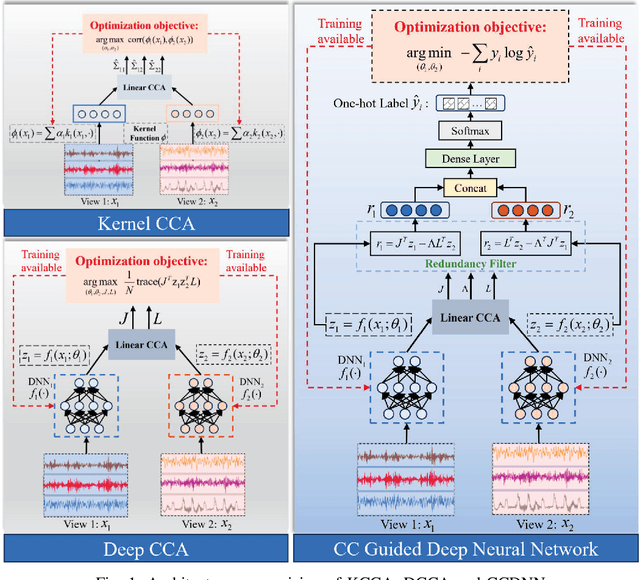
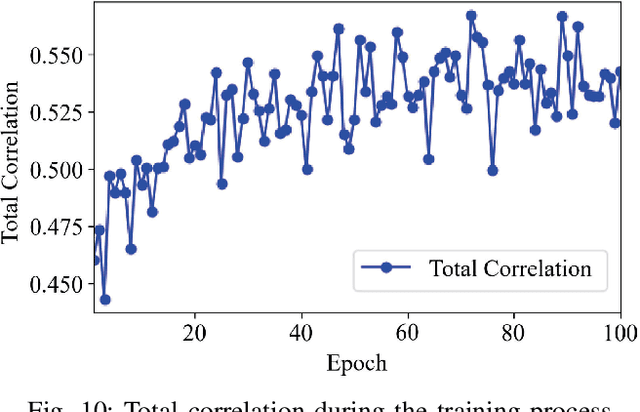
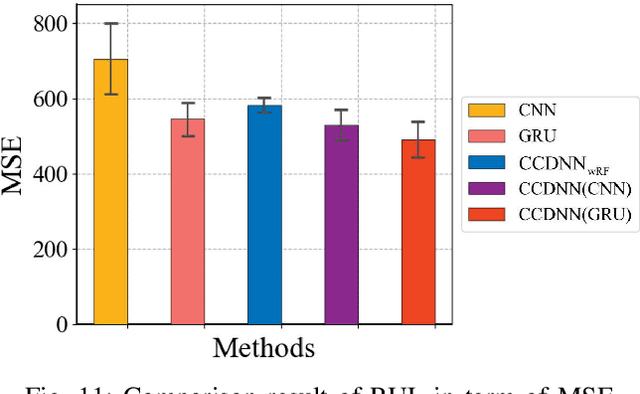
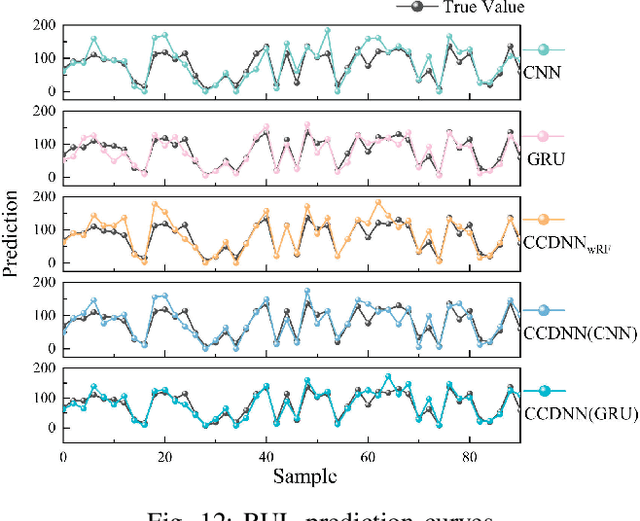
Abstract:Learning representations of two views of data such that the resulting representations are highly linearly correlated is appealing in machine learning. In this paper, we present a canonical correlation guided learning framework, which allows to be realized by deep neural networks (CCDNN), to learn such a correlated representation. It is also a novel merging of multivariate analysis (MVA) and machine learning, which can be viewed as transforming MVA into end-to-end architectures with the aid of neural networks. Unlike the linear canonical correlation analysis (CCA), kernel CCA and deep CCA, in the proposed method, the optimization formulation is not restricted to maximize correlation, instead we make canonical correlation as a constraint, which preserves the correlated representation learning ability and focuses more on the engineering tasks endowed by optimization formulation, such as reconstruction, classification and prediction. Furthermore, to reduce the redundancy induced by correlation, a redundancy filter is designed. We illustrate the performance of CCDNN on various tasks. In experiments on MNIST dataset, the results show that CCDNN has better reconstruction performance in terms of mean squared error and mean absolute error than DCCA and DCCAE. Also, we present the application of the proposed network to industrial fault diagnosis and remaining useful life cases for the classification and prediction tasks accordingly. The proposed method demonstrates superior performance in both tasks when compared to existing methods. Extension of CCDNN to much more deeper with the aid of residual connection is also presented in appendix.
Spatial-temporal associations representation and application for process monitoring using graph convolution neural network
May 11, 2022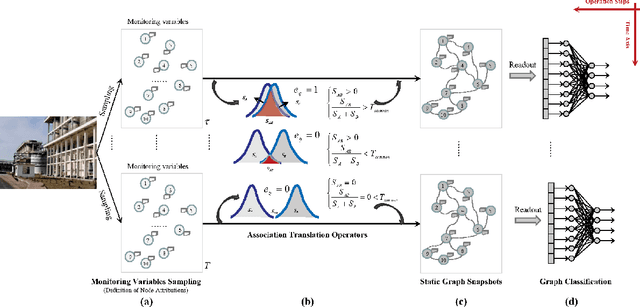

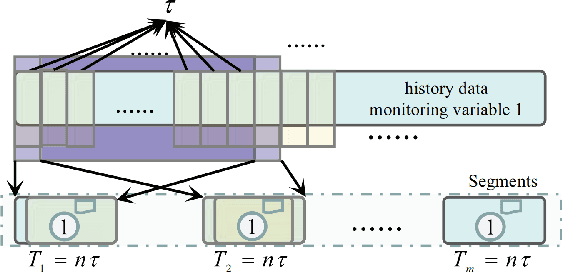
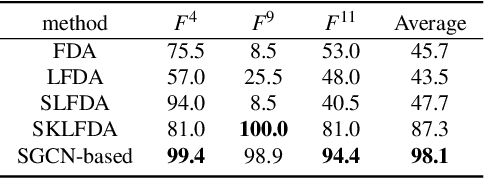
Abstract:Industrial process data reflects the dynamic changes of operation conditions, which mainly refer to the irregular changes in the dynamic associations between different variables in different time. And this related associations knowledge for process monitoring is often implicit in these dynamic monitoring data which always have richer operation condition information and have not been paid enough attention in current research. To this end, a new process monitoring method based on spatial-based graph convolution neural network (SGCN) is proposed to describe the characteristics of the dynamic associations which can be used to represent the operation status over time. Spatia-temporal graphs are firstly defined, which can be used to represent the characteristics of node attributes (dynamic edge features) dynamically changing with time. Then, the associations between monitoring variables at a certain time can be considered as the node attributes to define a snapshot of the static graph network at the certain time. Finally, the snapshot containing graph structure and node attributes is used as model inputs which are processed to implement graph classification by spatial-based convolution graph neural network with aggregate and readout steps. The feasibility and applicability of this proposed method are demonstrated by our experimental results of benchmark and practical case application.
State Transition Algorithm
Dec 09, 2013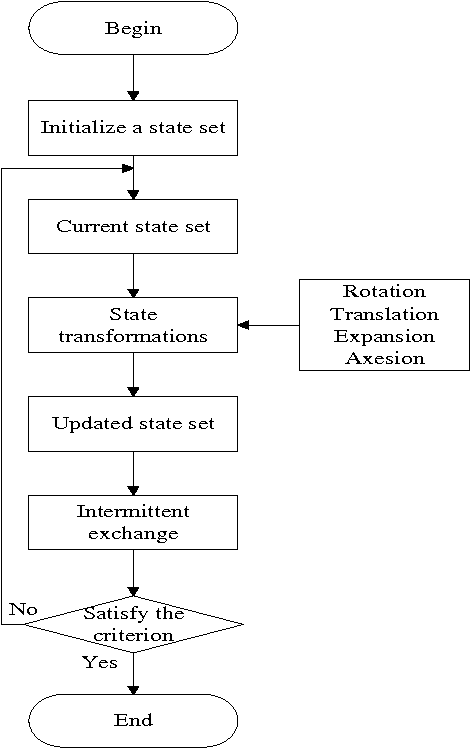
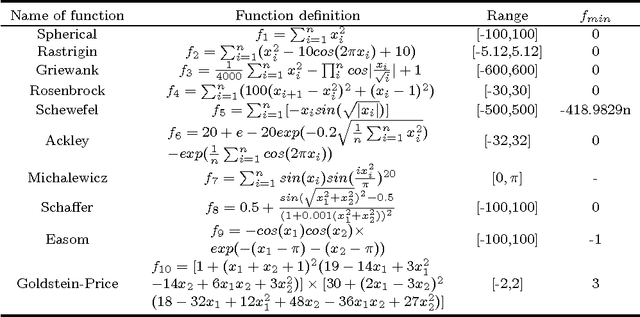
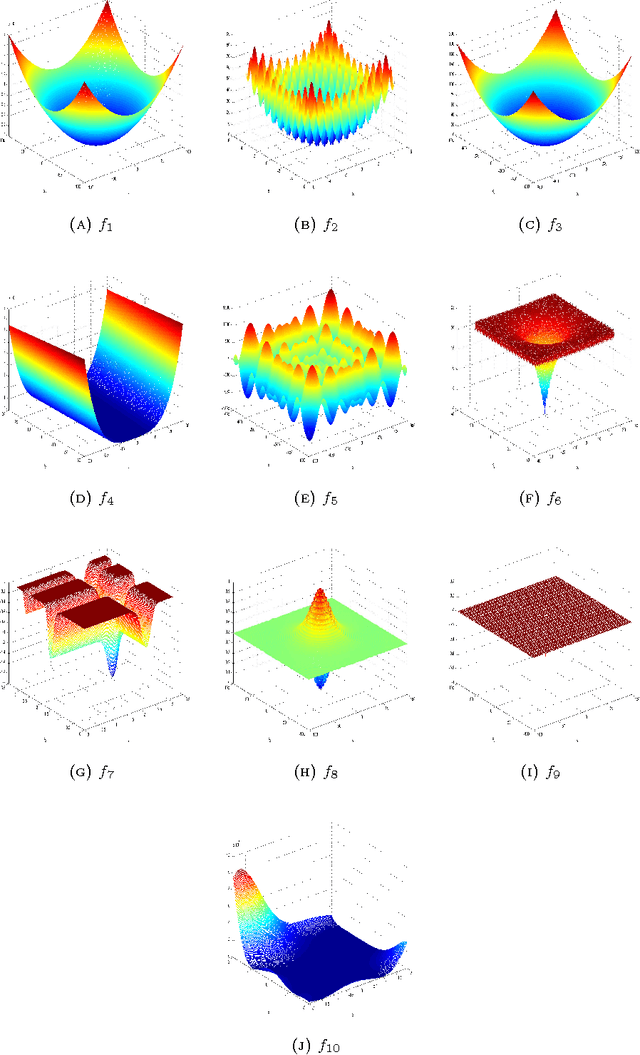
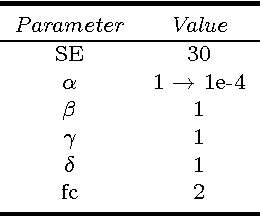
Abstract:In terms of the concepts of state and state transition, a new heuristic random search algorithm named state transition algorithm is proposed. For continuous function optimization problems, four special transformation operators called rotation, translation, expansion and axesion are designed. Adjusting measures of the transformations are mainly studied to keep the balance of exploration and exploitation. Convergence analysis is also discussed about the algorithm based on random search theory. In the meanwhile, to strengthen the search ability in high dimensional space, communication strategy is introduced into the basic algorithm and intermittent exchange is presented to prevent premature convergence. Finally, experiments are carried out for the algorithms. With 10 common benchmark unconstrained continuous functions used to test the performance, the results show that state transition algorithms are promising algorithms due to their good global search capability and convergence property when compared with some popular algorithms.
* 18 pages, 28 figures
A Discrete State Transition Algorithm for Generalized Traveling Salesman Problem
Apr 29, 2013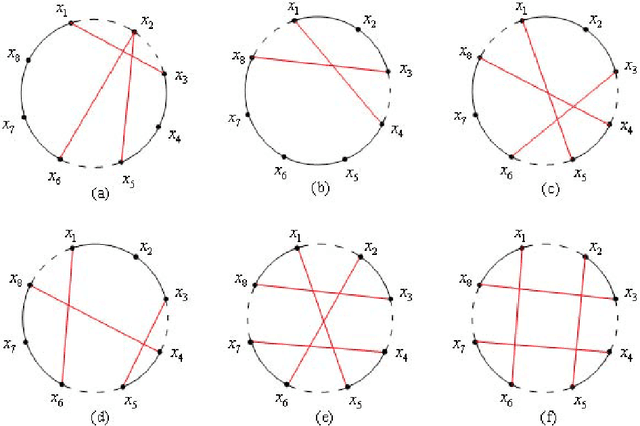
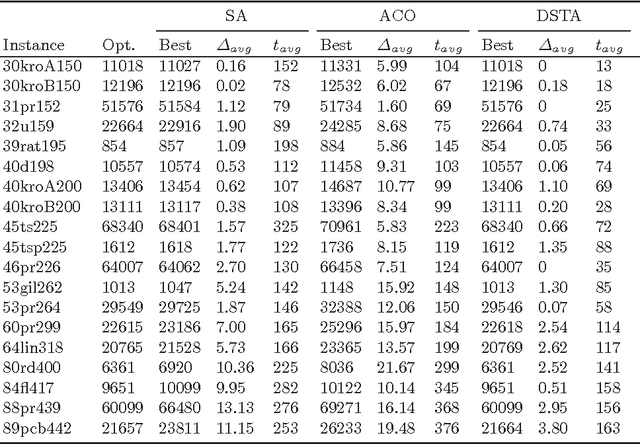
Abstract:Generalized traveling salesman problem (GTSP) is an extension of classical traveling salesman problem (TSP), which is a combinatorial optimization problem and an NP-hard problem. In this paper, an efficient discrete state transition algorithm (DSTA) for GTSP is proposed, where a new local search operator named \textit{K-circle}, directed by neighborhood information in space, has been introduced to DSTA to shrink search space and strengthen search ability. A novel robust update mechanism, restore in probability and risk in probability (Double R-Probability), is used in our work to escape from local minima. The proposed algorithm is tested on a set of GTSP instances. Compared with other heuristics, experimental results have demonstrated the effectiveness and strong adaptability of DSTA and also show that DSTA has better search ability than its competitors.
* 8 pages, 1 figure
Initial Version of State Transition Algorithm
Sep 12, 2012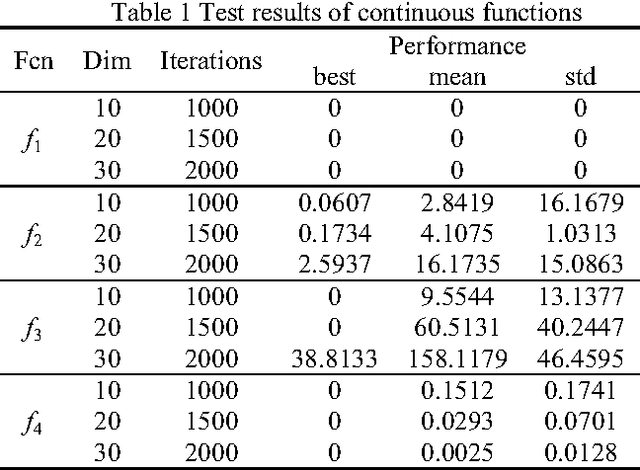
Abstract:In terms of the concepts of state and state transition, a new algorithm-State Transition Algorithm (STA) is proposed in order to probe into classical and intelligent optimization algorithms. On the basis of state and state transition, it becomes much simpler and easier to understand. As for continuous function optimization problems, three special operators named rotation, translation and expansion are presented. While for discrete function optimization problems, an operator called general elementary transformation is introduced. Finally, with 4 common benchmark continuous functions and a discrete problem used to test the performance of STA, the experiment shows that STA is a promising algorithm due to its good search capability.
 Add to Chrome
Add to Chrome Add to Firefox
Add to Firefox Add to Edge
Add to Edge